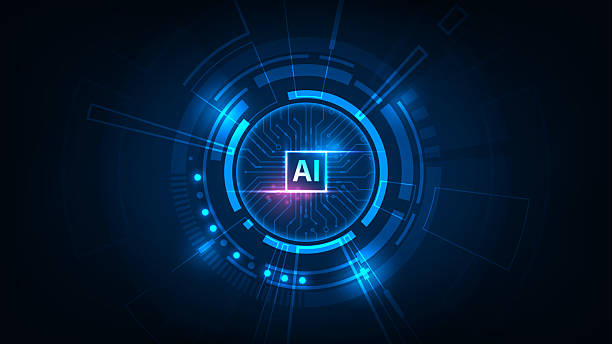Why is Fast Website Design More Important Than Ever?

In today’s digital world, where speed is paramount, fast website design is no longer just a competitive advantage, but an undeniable necessity.
Internet users have little patience and expect websites to load in a fraction of a second.
#FastLoading a website not only improves #UserExperience, but also directly impacts #SEORanking and conversion rates.
Studies have shown that even a one-second delay in page load time can lead to a significant decrease in page views, customer satisfaction, and ultimately, revenue.
This is especially crucial for businesses operating online.
Imagine a potential customer visiting your website to purchase a product, but abandoning it and going to your competitor due to slow loading of images or information.
This is a direct loss of opportunity.
In the information age, your website is your business’s storefront, and its speed is a reflection of your professionalism and respect for your customer’s time.
Therefore, prioritizing fast website design should be at the forefront of every business’s planning.
This doesn’t just mean using high-speed internet, but also optimizing website code, images, and its overall structure.
Does your current website reflect your brand’s credibility as it should? Or does it drive away potential customers?
Rasaweb, with years of experience in professional corporate website design, is your comprehensive solution.
✅ A modern, beautiful website tailored to your brand identity
✅ Significant increase in lead and new customer acquisition
⚡ Contact Rasaweb now for a free corporate website design consultation!
Key Factors Affecting Website Speed
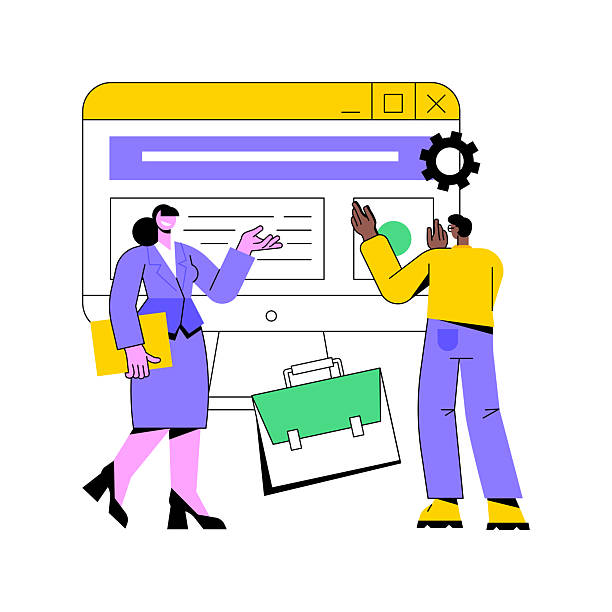
To achieve fast website design, we must have a comprehensive understanding of the factors that affect website load speed.
These factors can be broadly divided into two categories: client-side (frontend) factors and server-side (backend) factors.
Among the most important client-side factors are large image and video files, which are often placed on websites without proper optimization.
Excessive use of JavaScript scripts and CSS files that are not properly compressed or combined can also significantly increase load time.
Furthermore, the number of HTTP requests that the browser sends to fully load a page plays a crucial role; the more requests, the longer the load time.
On the other hand, server-side factors include hosting quality and speed, the distance between the server and the user, and server configuration.
A slow server or hosting with limited resources can nullify all your frontend optimization efforts.
Using a Content Delivery Network (CDN) can also significantly improve loading speed by storing cached versions of content on servers closer to users.
Additionally, database optimization and the use of server-side caching are other factors that directly impact speed.
Understanding these factors is the first step towards achieving fast and efficient website design.
Advanced Frontend Optimization Techniques for More Speed

To achieve fast website design, frontend optimization is of paramount importance.
This section includes all the elements that the user directly sees and interacts with in their browser.
One of the fundamental principles is image compression.
High-quality, large images are website speed killers.
Using optimized image formats like WebP, lossless compression, and loading images in appropriate sizes for different devices (responsive images) can make a significant difference.
Also, implementing Lazy Loading for images and videos, meaning content is only loaded when the user scrolls to that part of the page, significantly reduces the initial page load time.
The next point is compressing and combining CSS and JavaScript files.
Reducing the number of HTTP requests by merging multiple CSS or JS files into one, and also minifying (Minification) the code by removing extra spaces and comments, increases browser processing speed.
Using non-blocking CSS and JS and placing CSS codes at the beginning of the document (head) and JavaScript codes at the end of the document (before the closing </body> tag) are also crucial techniques for optimizing the initial page render time.
Additionally, using web fonts with optimized formats like WOFF2 and loading subsets of fonts instead of the entire font helps accelerate loading.
These specialized measures form the foundation of fast and optimized website design.
| Technique | Description | Impact on Speed |
|---|---|---|
| Image Compression (WebP) | Reduces image file size without noticeable quality loss | Reduces content load time, improves LCP |
| Lazy Loading | Loads content (images, videos) only when needed | Reduces initial page load time |
| Code Minification (CSS, JS) | Removes extra characters (spaces, comments) from code | Reduces file size, increases processing speed |
| File Combination (CSS, JS) | Merges multiple files into a single one | Reduces the number of HTTP requests |
| Optimized Font Loading | Uses optimized formats and subsets | Reduces visual element load time |
The Role of Hosting and Server-Side Optimization in Fast Website Design

After frontend optimization, it’s time for the crucial role of the server and hosting in achieving fast website design.
Even if your frontend coding is flawless, a slow or unconfigured server can nullify all your efforts.
Choosing a reliable and high-quality hosting service is the first step.
Inexpensive shared hosting might be suitable for starters, but due to resource sharing with other websites, they often offer lower speeds.
For high-traffic or complex websites, using VPS, Cloud Hosting, or Dedicated Server is recommended, as they guarantee more resources.
Furthermore, proper web server configuration (such as Apache or Nginx) and the use of server-side caching modules (like Redis or Memcached) can significantly increase server responsiveness.
Enabling GZIP compression on the server to reduce the size of text files (HTML, CSS, JS) before sending them to the user’s browser is a fundamental and effective measure.
Also, Database Optimization, including proper indexing, removal of duplicate data, and optimized queries, prevents website speed degradation during database interaction.
Regular updates of server software and CMS can also help improve performance and security.
Paying attention to these technical aspects is the cornerstone of a high-speed and reliable website.
Are your e-commerce website visitors leaving before making a purchase? Worry no more! With Rasaweb’s professional e-commerce website design services, solve the problem of converting visitors into customers forever!
✅ Significant increase in conversion rates and sales
✅ Unparalleled and engaging user experience
⚡ Contact us now for a free consultation!
The Astonishing Impact of Website Speed on SEO and User Experience
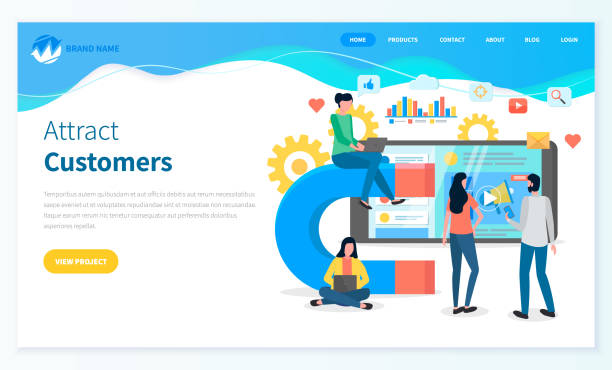
Website speed not only affects user satisfaction but is also considered one of the most important ranking factors in search engine algorithms, especially Google.
Google has clearly stated that page load speed is one of the key signals for website ranking.
Faster websites have lower Bounce Rates, receive more time from users, and experience higher Conversion Rates.
These factors send positive signals to search engines, indicating the high quality and value of your website.
On the other hand, User Experience (UX) is heavily influenced by speed.
In a world where users seek instant information, loading delays can mean losing an audience.
A high-speed website conveys a sense of efficiency and professionalism, encouraging users to stay longer, view more pages, and likely convert into customers.
Optimizing website speed for mobile devices is also of particular importance, as a significant portion of internet traffic comes from mobile.
Therefore, fast website design means direct investment in SEO and improving user experience, which will ultimately lead to increased visibility, traffic, and your online success.
This analysis shows why every business should take website speed optimization seriously.
Speed Measurement Tools and How to Interpret Results
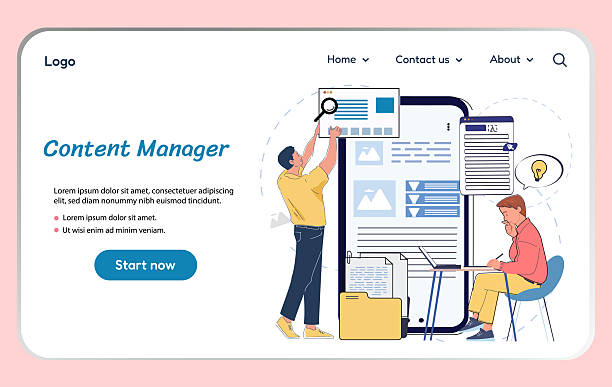
To effectively implement fast website design, we need tools that measure website performance and identify weaknesses.
Several powerful tools are available for free that provide comprehensive information about website speed and optimization.
Google PageSpeed Insights, GTmetrix, and Pingdom Tools are among the most popular of these tools.
Each of these tools provides various metrics for evaluating website speed and displays scores on different scales (usually from 0 to 100) for mobile and desktop performance.
Google PageSpeed Insights focuses on Core Web Vitals (such as LCP, FID, CLS), which are Google’s main metrics for page experience.
GTmetrix provides more details about load time, page size, and the number of requests, and offers precise recommendations for improvement.
Pingdom Tools also has similar functionality and performs speed tests from various locations around the world.
Interpreting the results of these tools is very important.
A high score means high speed, but attention should also be paid to the recommendations and details provided.
For example, although an uncompressed image might only reduce a score, lazy loading it can have a significant impact on LCP.
Also, attention to server response time and proper content distribution via CDN is highlighted in these reports.
By continuously using these tools and accurately analyzing their reports, we can continuously improve our website to achieve high speed in web design.
Common Web Design Mistakes That Lead to Slow Speed
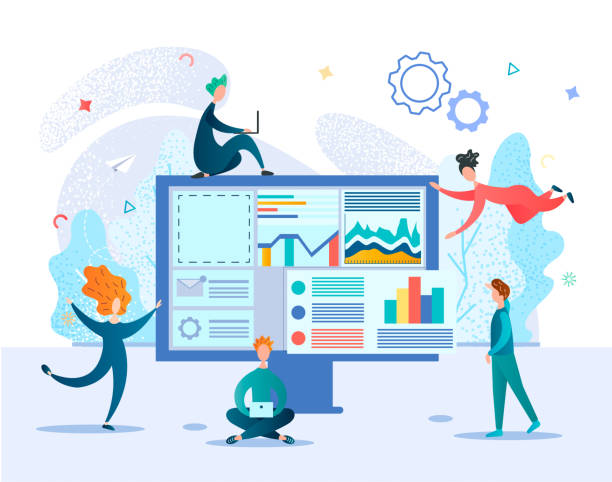
Despite the strong emphasis on fast website design, many developers and website owners inadvertently make mistakes that lead to reduced speed.
One of the most common mistakes is lack of image optimization.
Using large-sized images and uncompressed formats imposes a heavy burden on the server and the user’s browser.
Simultaneously loading multiple heavy web fonts or not using browser caching for static files are other common errors.
Lack of compression for CSS and JavaScript files, as well as placing JavaScript codes at the top of the HTML document, blocks page rendering and delays content display.
On the other hand, on the server side, choosing inappropriate hosting and incorrect server configuration for caching and GZIP compression can have a detrimental effect on speed.
Excessive use of plugins and extensions in Content Management Systems (CMS) like WordPress, each adding extra requests and loads to the website, is also a big mistake.
Many of these plugins, even if not active, can consume system resources and reduce speed.
Lack of regular updates for CMS, themes, and plugins can also lead to security issues and reduced performance.
Awareness of these common mistakes and avoiding them is an important step towards achieving a high-speed and efficient website.
By identifying and removing these obstacles, we can provide a better user experience and achieve higher rankings in search engines.
| Common Mistake | Explanation | Solution for Fast Website Design |
|---|---|---|
| Unoptimized Images | Large size, inappropriate format, big dimensions | Compression, WebP, Lazy Loading, Responsive dimensions |
| Uncompressed CSS/JS Files | Large size, with extra spaces and comments | Minification, file combination, non-blocking loading |
| Inappropriate Hosting | Slow server, limited resources, long distance to user | Choosing quality hosting (VPS, Cloud), CDN |
| Excessive Use of Plugins | Increases requests and server load | Review needs, use lightweight and essential plugins |
| Lack of Caching | Reloading all content on every visit | Activating browser and server caching |
The Future of Website Design and the Role of Speed in New Technologies
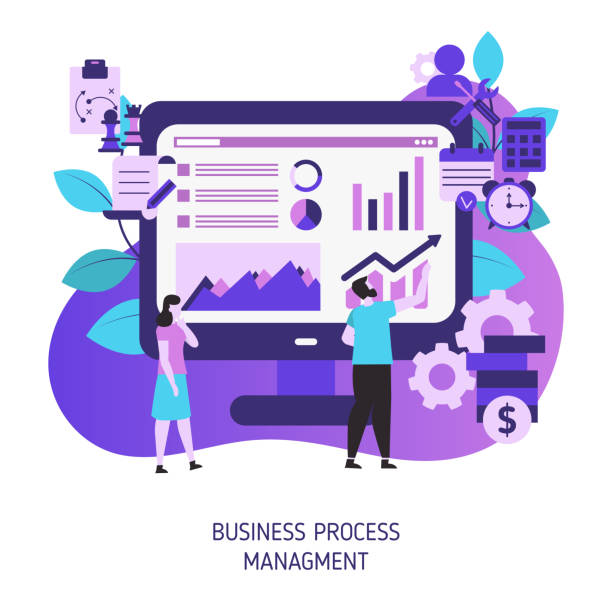
With rapid advancements in web technologies, the concept of fast website design is also undergoing transformation and evolution.
The future of the web is moving towards ultra-fast websites and flawless user experiences that go beyond just initial load speed.
Technologies like Progressive Web Apps (PWAs) with offline capabilities and quick access via the device’s home screen, offer a user experience similar to native applications.
Also, new web architectures like JAMstack (JavaScript, APIs, Markup), which are based on static and serverless pages, inherently provide high speed.
The use of microservices and Headless CMS allows developers to manage backend and frontend separately, providing more flexibility and speed in development and scalability.
Also, the emergence of new internet protocols like HTTP/3, built on QUIC, promises faster and more reliable web communications.
These technologies, along with Artificial Intelligence and Machine Learning which can automate optimization processes, shape the future of high-speed web design.
In the future, users will expect websites not only to load quickly but also to respond intelligently and personalized to their needs.
These developments show that investing in fast website design is an investment in the future of online business.
Are you falling behind in competition with large online stores?
Rasaweb, with professional e-commerce website design, brings your business online and increases your market share!
✅ Increased brand credibility and customer trust
✅ Easy shopping experience leading to more sales
⚡ Act now to receive a free website design consultation!
Commercial Benefits and Return on Investment of High-Speed Website Design

Investing in fast website design is not just an expense, but a smart investment with a significant Return on Investment (ROI).
The commercial benefits of a high-speed website are numerous and impressive.
Firstly, increased conversion rates.
Every second improvement in load time can lead to a significant increase in conversion rates, whether it’s product sales, form submissions, or registrations.
Users, especially in e-commerce, are more inclined to buy from websites that offer a smooth and delay-free shopping experience.
Secondly, improved SEO ranking and organic traffic.
As mentioned earlier, Google rewards faster websites by ranking them higher in search results.
This means more organic traffic, higher visibility, and consequently, increased sales opportunities.
Thirdly, reduced server and bandwidth costs.
Optimized and fast websites consume fewer server resources, which can lead to reduced hosting and bandwidth costs, especially for high-traffic websites.
Fourthly, improved brand image and customer trust.
A fast and responsive website reflects your brand’s professionalism and credibility.
This helps build trust among users and encourages them to return and engage more with your brand.
Finally, reduced bounce rates and increased user time on site indicate their satisfaction, which in turn contributes to positive signals for search engines and increased sales.
Therefore, website speed optimization is a comprehensive strategy for sustainable business growth.
Conclusion and Practical Steps for Fast Website Design

In summary of the discussed topics, it is clear that fast website design is a critical factor for success in the current digital ecosystem.
From improving user experience and increasing conversion rates to enhancing search engine rankings and reducing operational costs, the benefits of a high-speed website are undeniable.
To achieve this goal, a comprehensive and continuous approach is required, involving simultaneous frontend and backend optimization.
Practical steps that can be taken to achieve fast website design include: Firstly, continuous website speed evaluation using tools like Google PageSpeed Insights and GTmetrix.
Secondly, comprehensive optimization of images and media using modern formats and lazy loading.
Thirdly, compressing and minifying CSS and JavaScript files, as well as combining them to reduce HTTP requests.
Fourthly, choosing a quality hosting service and optimizing server configuration, including enabling caching and GZIP compression.
Fifthly, using a Content Delivery Network (CDN) for faster content delivery to users worldwide.
Sixth, optimizing website code and database, and ensuring theme and plugin optimization in Content Management Systems.
Seventh, and perhaps most importantly, consider website speed optimization as an ongoing process, not a one-time project.
By following these guidelines and staying updated with the latest technologies, you can ensure that your website consistently performs at its peak and offers the best possible user experience.
Frequently Asked Questions
| Question | Answer |
|---|---|
| What is fast website design? | The process of building a website that loads quickly and provides a smooth user experience. |
| Why is website speed important? | Improved user experience, reduced bounce rate, increased conversion rate, and better search engine ranking (SEO). |
| What factors affect website speed? | Image size, number of HTTP requests, code optimization (HTML, CSS, JS), hosting speed, and browser cache. |
| How can website speed be improved? | Optimizing images, compressing files, using caching, choosing suitable hosting, and reducing unnecessary plugins. |
| How do images affect website speed? | Large images or inappropriate formats can significantly increase page load time. |
| What is the role of JavaScript and CSS in website speed? | Unoptimized codes, large size, or blocking execution can reduce page render speed. |
| How much does hosting affect website speed? | The speed and quality of the hosting server directly impact website response time and initial load speed. |
| What tools are available for checking website speed? | Google PageSpeed Insights, GTmetrix, Pingdom Tools are common tools. |
| What are the benefits of a fast website? | Greater user satisfaction, reduced bounce rate, increased time on site, and improved ranking in Google results (SEO). |
| What are the common mistakes that slow down a website? | Using unoptimized images, bulky and disorganized code, excessive use of plugins, and lack of caching. |
And other advertising services of Rasaweb Advertising Agency
Smart Data Analysis: An innovative platform for improving SEO ranking through Google Ads management.
Smart Social Media: A novel service for increasing user engagement through SEO-driven content strategy.
Smart Direct Marketing: A dedicated service for sales growth based on user experience customization.
Smart Advertising Campaign: Professional optimization to increase website traffic using custom programming.
Smart Sales Automation: An innovative platform for improving sales growth by optimizing key pages.
And over a hundred other services in internet advertising, advertising consultation, and organizational solutions
Internet Advertising | Advertising Strategy | Advertorials
Resources
- 10 Tips to Increase Your Website Speed
- Why is Website Speed Crucial for SEO?
- The Impact of Website Load Speed on User Experience
- Free Tools for Measuring Website Speed
? Are you ready to revolutionize your business in the digital world? Rasaweb Afarin, with expertise in comprehensive digital marketing services including corporate website design, paves your path to growth.
📍 Tehran, Mirdamad Street, Next to Central Bank, Southern Kazeroun Alley, Ramin Alley, No. 6


